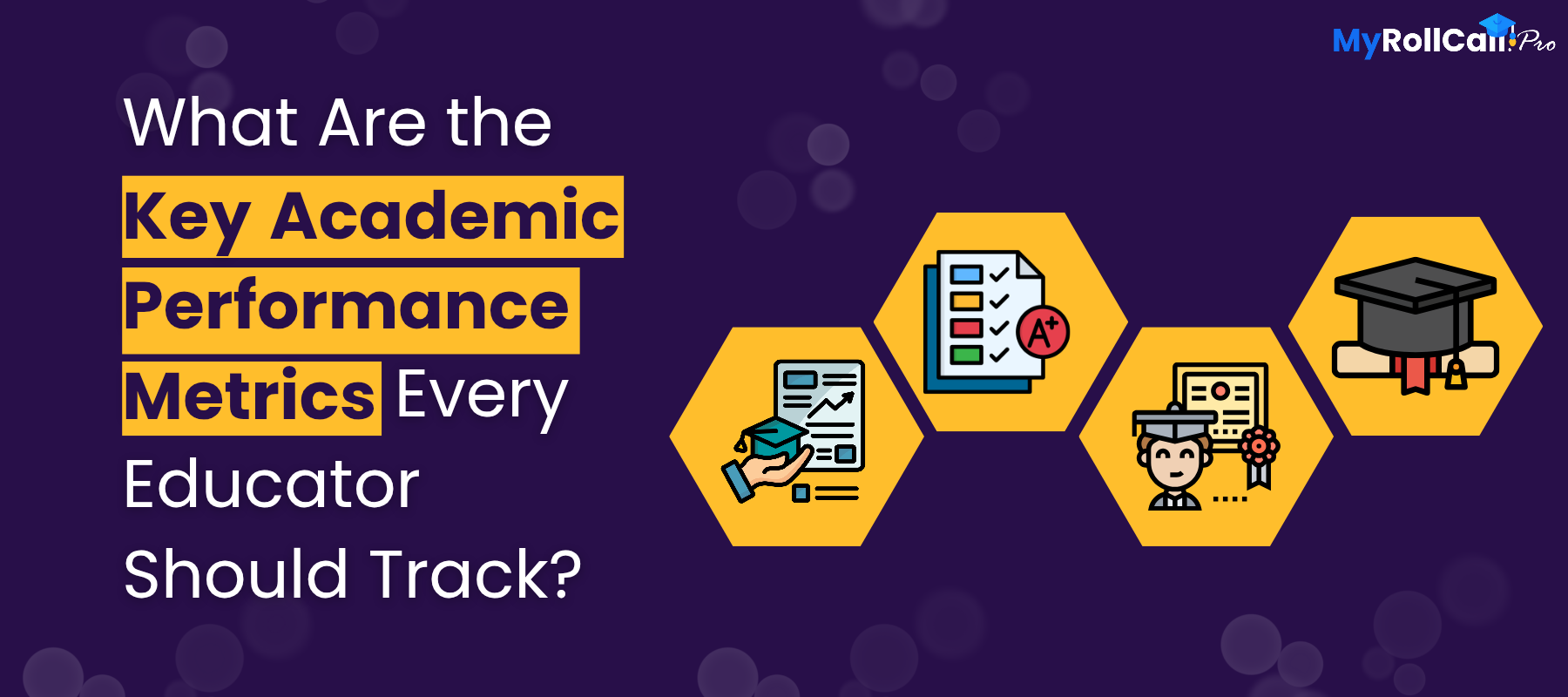
What Are the Key Academic Performance Metrics Every Educator Should Track?
In today’s classrooms, academic success goes beyond exam scores. Teachers are now focusing on the full learning experience, how well students are engaging, where they’re struggling, and what kind of support they need. Tracking student performance helps educators make better decisions to support every learner.
The Indian education system is also shifting to this data-first approach. According to the UDISE+ 2023–24 report, college that tracked student-level data, including attendance, assessments, and learning outcomes saw a 12% improvement in academic achievement compared to college that didn’t.
What Are Academic Performance Metrics and Why Do They Matter?
Academic performance metrics are measurable indicators that help teachers understand students' progress. These include test scores, grades, attendance, homework submission, and class participation. They paint a full picture of the student’s journey, allowing educators to support them in targeted ways.
For instance, if a student scores well in assignments but performs poorly in exams, it may indicate test anxiety rather than a lack of knowledge. This insight helps teachers shift their approach from punishment to support.
How Can Academic Performance Analysis Help Personalise Learning Paths?
Once these metrics are collected, the next step is academic performance analysis. This means studying a student’s academic records to identify learning trends, strengths, and areas for improvement.
Let’s say a student excels in creative writing but struggles with grammar. Through performance analysis, the teacher can suggest tools like grammar-checking apps or small-group tutoring. The idea is to move away from one-size-fits-all teaching and tailor education to individual needs.
Real-world applications are already showing impact. According to a recent UGC report, colleges that use performance analysis to personalise lessons experienced a 22% boost in student retention and better classroom participation.
What Role Do Longitudinal Metrics Play in Monitoring Student Progress?
One test score might show how a student did on one day, but longitudinal metrics tell us how they’ve been performing over time. Tracking this long-term progress helps spot consistent improvement or recurring problems.
For example, if a student’s grades slowly decline over multiple semesters, it might indicate burnout or personal issues. Early detection allows colleges to intervene, perhaps with counselling or learning accommodations, before the problem grows.
The State of Education in India Report (2023) found that institutions tracking student data across academic years saw 30% fewer dropouts, as they were better equipped to support students at the right time.
How Can Institutions Use Student Insights to Drive Academic Excellence?
Once data is collected and analysed, it becomes student insights—meaningful, actionable information that can guide decisions at all levels of an institution. These insights are useful not only for individual students but also for improving college-wide strategies.
For instance, if multiple grade levels show weak performance in science, the college might introduce new lab kits, digital tools, or teacher training. Similarly, if certain student groups like first-generation learners are falling behind, targeted mentorship can help bridge the gap.
The Ministry of Education’s Performance & Learning Outcomes report (2022) states that colleges leveraging student insights saw a 20% increase in teaching quality ratings, especially when insights were used for real-time classroom adjustments.
Which Academic Metrics Should Educators Track Consistently for the Best Results?
There are several key metrics that educators should monitor regularly:
-
Grades and exam results: These offer a basic measure of concept understanding.
-
Homework completion: Reflects effort and time management.
-
Classroom participation: Shows engagement and interest.
-
Punctuality and attendance: Critical for consistent learning.
-
Group project performance: Indicates collaboration and communication skills.
These metrics are best understood when viewed together rather than in isolation. A student might be doing well on paper but disengaged in class, which could be flagged only through a more holistic review.
What Are the Best Tools and Practices for Efficiently Tracking These Metrics?
Technology can simplify the process of tracking and analysing metrics. Learning Management Systems (LMS) collect real-time data, making it easier for teachers to see how students are doing.
These systems help monitor attendance, assignment submissions, and test scores from a central dashboard. For more detailed tracking, institutions are also turning to platforms that offer engagement metrics, which analyse how much time students spend on learning materials and how often they interact with peers or instructors.
To use these tools effectively:
-
Teachers should receive basic training in data analysis.
-
Colleges should review data regularly, not just at term-end.
-
Decisions should be based on trends, not just single events.
Conclusion
Tracking and understanding academic metrics are no longer optional, it’s essential. When used wisely, these metrics become more than just numbers. They help teachers identify learning gaps, personalise instruction, and support students before they fall behind.
Students, in turn, receive clearer guidance and fairer assessments. They know where they stand and what to work on. This makes learning more motivating and meaningful.
Colleges can create a more informed, inclusive, and empowering education system by embedding student performance tracking into daily practice, drawing from student insights, relying on academic performance analysis, and applying engagement metrics.